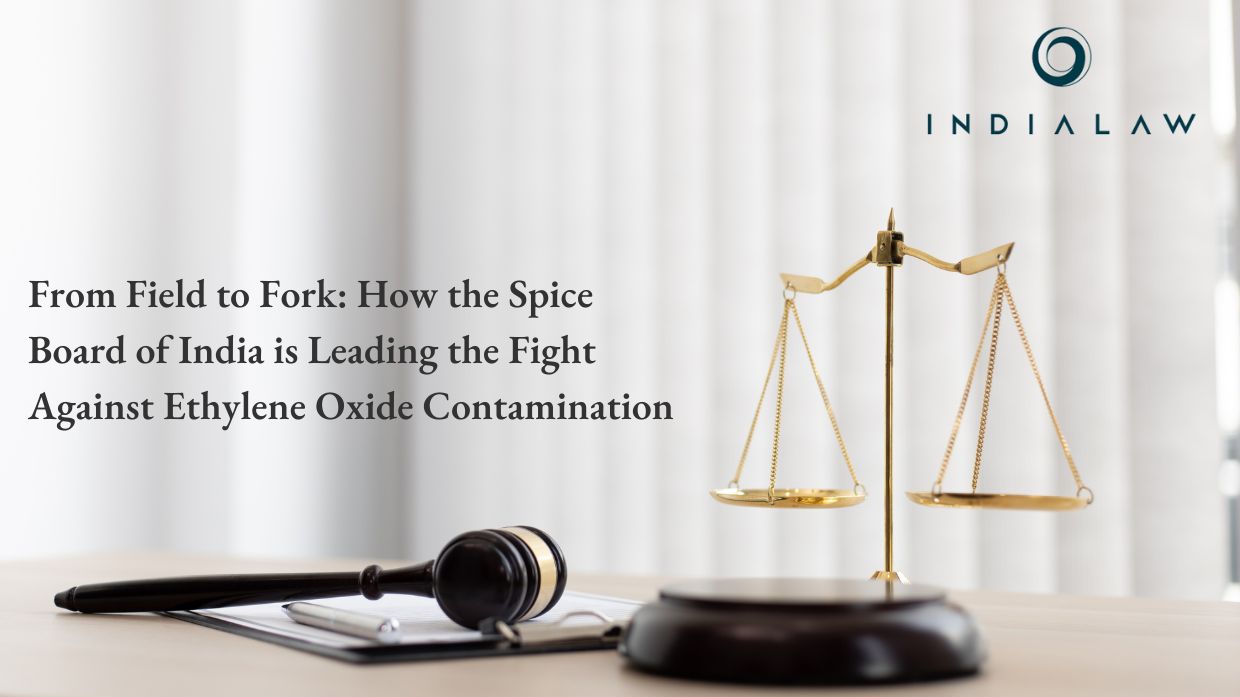From Field to Fork: How the Spices Board of India is Leading the Fight Against Ethylene Oxide (EtO) Contamination

Introduction
Indian spices have long been revered for their rich aroma, vibrant colours, and exceptional quality, earning them a distinguished place on dining tables and in kitchens worldwide. However, recent years have seen instances of Indian spices, including cumin, sesame seeds, and coriander, being rejected at international borders. Reports label them as “unfit for human consumption,” primarily due to contamination with ethylene oxide (EtO), a carcinogenic sterilizing agent. These rejections not only tarnish India’s reputation as the “Land of Spices” but also threaten its spice export industry, a significant contributor to the nation’s economy.
To tackle this challenge head-on, the Spices Board of India, under the Ministry of Commerce and Industry, has introduced comprehensive guidelines to prevent EtO contamination, ensuring the safety and global compliance of Indian spices.
The Fight Against EtO Contamination
What is Ethylene Oxide (EtO)?
EtO is a flammable, colourless gas widely used in industries as a sterilizing agent, fumigant, and disinfectant. However, its misuse in the food industry has raised significant concerns. Classified as a Type 1 Carcinogen by the WHO, EtO poses serious health risks when ingested, particularly in spices and herbs. Its residues can transform into 2-Chloroethanol (2-CE), an equally toxic compound.
Why is Regulation Crucial?
As importing countries tighten their safety protocols, contamination with EtO has led to:
- International rejections of Indian spice consignments.
- Loss of consumer trust in Indian spice exports.
- Potential damage to India’s position in the global spice trade.
Ensuring EtO-free spices is essential for safeguarding public health, complying with international food safety norms, and maintaining India’s competitive edge in global markets.
Key Highlights of the Guidelines
1. Inputs and International Standards
The guidelines, issued by the Spices Board of India, incorporate inputs from stakeholders, trade institutions, and international regulatory bodies. They align with the Maximum Residue Levels (MRLs) set by major markets, such as the EU, USA, and Canada, ensuring global compliance.
2. Preventive Measures
- Incorporating EtO contamination as a critical hazard in HACCP and food safety plans.
- Testing raw materials, packaging, and finished products for EtO residues.
- Avoiding EtO usage entirely across the supply chain.
- Conducting awareness programs for stakeholders.
3. Alternate Sterilization Methods
Exporters are encouraged to adopt safer alternatives like:
- Steam sterilization: A globally accepted, natural method.
- Irradiation: Limited to non-organic spices and subject to consumer preferences in certain markets.
- Any methods approved by FSSAI.
4. Ensuring Microbial Safety
The guidelines emphasize strict hygienic practices during production and packaging, adhering to Codex principles and FSSAI regulations. They also recommend airtight packaging with inert gases to prevent microbial growth.
Measures Across the Supply Chain
Incoming Material Standards
- Accept only raw materials free from microbial and physical contaminants.
- Source from approved suppliers with robust safety controls.
Prevention of Cross-Contamination
- Separate storage and processing for treated and untreated spices.
- Maintain strict hygiene protocols to avoid microbial contamination.
Transportation Protocols
- Use clean, pest-free, ventilated vehicles for transporting spices.
- Monitor temperature and humidity during transit, particularly for long-distance shipments.
Sample Testing and Handling
- Prevent contamination during sampling and ensure accurate testing of EtO and its metabolites.
Conclusion
India’s reputation as the “Land of Spices” is built on centuries of trust, quality, and flavour. However, maintaining this legacy requires addressing the challenges posed by EtO contamination with unflinching rigor. The Spices Board of India’s comprehensive guidelines reflect a proactive approach to safeguarding the integrity of Indian spices, ensuring they meet global safety standards while retaining their natural essence.
By adopting these measures, India is not just protecting its spice trade but reinforcing its commitment to consumer health and food safety. With a united effort from farmers, exporters, and regulators, India can confidently reclaim its rightful place as the global leader in spice exports, free from the shadow of contamination.
For further details write to contact@indialaw.in
By entering the email address you agree to our Privacy Policy.



